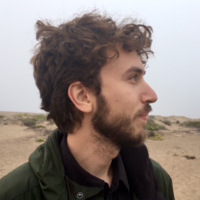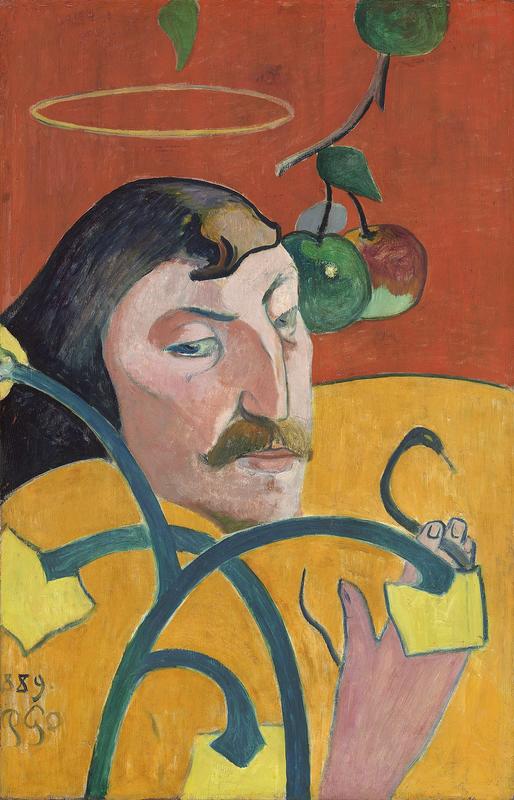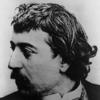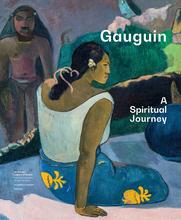More about Self-Portrait
- All
- Info
- Shop

Contributor
Self-Portrait is more of a mind map than a selfie.
Gauguin once said that he would be a poet for the initiated few, and an enigma for the rest. Self-Portrait, also known as Self-Portrait with Halo and Snake, might prove this boast more than his other paintings. It also reveals the artist’s mind as one ruled by symbols and a personal mysticism.
Painted during his tumultuous stay with Vincent van Gogh, Gauguin presents a complex self-portrait of himself. Featuring his face in a style he described as a caricature, the painting is inspired by Japanese woodblock prints in its elongated structure. The use of flat colors with dark outlines is classic Gauguin. The painting is overwhelmingly Symbolist, however, in that he is giving form to his own dream-like, spiritual thoughts.
Above his disembodied head, which sits almost like a fruit in a still-life, floats a halo, turning him into an angel. Between his fingers bends a snake, bringing a demonic air. And with the two apples that dangle near him, as well as the yellow flowers that stand before him, the painting is almost a visual dictionary of the Garden of Eden. Bold move, Gauguin. Rather than focusing on getting your nose just right, you place yourself into a symbolic Garden of Eden, and, by extension, divinity. God must be waving his fiery sword.
Scholars have long noted the sinister feeling of the painting. With the snake in his hands, he comes off as a creepy occultist. His flat, waxy hair has been read as a subtle nod to the head-pieces of Egyptian Pharaohs, and his status between good and evil (halo and snake) as him positioning himself as Lucifer; both of which are symbolic lineages important to Theosophy, a branch of mysticism that seeks unadulterated knowledge of the universe. Gauguin himself was familiar with such philosophy, and would later seek out his own musings on life in Polynesia (as well as his own sexual desires – he gave a whole island an STD).
The whole painting, however, feels like a sardonic joke from a cynical thinker. Painted on a cupboard door he took from an inn, the lack of formality of medium seems to undercut his rather serious personal explorations of esoteric spirituality. Gauguin would paint at least 40 portraits of himself in his lifetime. Perhaps he was the enigma he was trying to unravel.
Sources
- Heimann, Nora. "Context and Meaning in Gauguin's First Fresco." Nineteenth-Century Art Worldwide. Accessed October 09, 2018. http://www.19thc-artworldwide.org/summer12/nora-heimann-context-and-mea….
- Jirat-Wasiutyński, Vojtěch. "Paul Gauguin's ‘Self-Portrait with Halo and Snake’: The Artist as Initiate and Magus." Art Journal, 1987, 22-28. Accessed October 6, 2018. doi:10.1080/00043249.1987.10792335.
- Examining Portraits: Vincent van Gogh / Paul Gauguin. PDF. National Gallery of Art. https://www.nga.gov/content/dam/ngaweb/Education/learning-resources/an-…
Featured Content
Here is what Wikipedia says about Self-Portrait with Halo and Snake
Self-Portrait with Halo and Snake, also known as Self-Portrait, is an 1889 oil-on-wood painting by French artist Paul Gauguin, which represents his late Brittany period in the fishing village of Le Pouldu in northwestern France. No longer comfortable with Pont-Aven, Gauguin moved on to Le Pouldu with his friend and student Meijer de Haan and a small group of artists. He stayed for several months in the autumn of 1889 and the summer of 1890, where the group spent their time decorating the interior of Marie Henry's inn with every major type of art work. Gauguin painted his Self-Portrait in the dining room with its companion piece, Portrait of Jacob Meyer de Haan (1889).
The painting shows Gauguin against a red background with a halo above his head and apples hanging beside him as he holds a snake in his hand while plants or flowers appear in the foreground. The religious symbolism and the stylistic influence of Japanese wood-block prints and cloisonnism are apparent. The portrait was completed several years before Gauguin visited Tahiti and is one of more than 40 self-portraits he completed during his lifetime. The work reached the art market in 1919 when Marie Henry sold it at the Galerie Barbazanges in Paris as part of her collected works from the Le Pouldu period. American banker Chester Dale acquired the painting in 1928, gifting it upon his death in 1962 to the National Gallery of Art in Washington, D.C.
Check out the full Wikipedia article about Self-Portrait with Halo and Snake














What's with the halo over his head? St Gauguin? Does not work for me, but still...three stars.